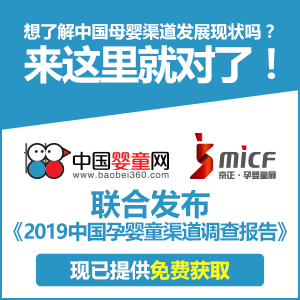���M(f��i)Ʒ��ȫί�T��(hu��)������ͯ�a(ch��n)Ʒ����ԏ�Ҏ(gu��)���ݰ�(Ӣ�İ�)
����The Consumer Product Safety Commission will vote on 22 September on a final interpretative rule that clarifies the scope of the term "children's product" as used in the Consumer Product Safety Improvement Act. The statutory definition of "children's product" specifies certain factors that are to be taken into consideration when making a determination about "whether a consumer product is primarily intended for a child 12 years of age or younger." These factors are:
����a statement by a manufacturer about the intended use of such product, including a label on such product if such statement is reasonable;
����whether the product is represented in its packaging, display, promotion or advertising as appropriate for use by children 12 years of age or younger;
����whether the product is commonly recognised by consumers as being intended for use by a child 12 years of age or younger; and
����the Age Determination Guidelines issued by CPSC staff in September 2002 and any successor to such guidelines.
����The proposed interpretative rule would further clarify these concepts and includes the following provisions.
����Whether a product is a children's product will be determined by considering the four specified statutory factors listed above. The term "for use" by children 12 years of age or younger generally means that children will physically interact with such products based on the reasonably foreseeable use and misuse of the product.
����A general use product would be defined as a product that is not designed or intended primarily for use by children 12 years old or younger. Examples of general use products may include products that a child would not be likely to interact with, or products that consumers older than 12 would be as likely or more likely to interact with. Products used by children 12 years of age or younger that have a declining appeal for teenagers are likely to be considered children's products.
����A manufacturer's statement about the product's intended use, including the product's label, should be reasonably consistent with the expected use patterns for the product but is not in and of itself considered to be determinative. A manufacturer's statement that a product is not intended for children does not preclude the product from being regulated as a children's product if its primary appeal is to children 12 years of age or younger. Similarly, a label indicating that a product is for ages nine and up does not necessarily make it a children's product if it is a general use product.
����Representations that a product is appropriate for use by children 12 years of age or younger may be express (e.g., specifically stated) or implied (e.g., in an image showing children 12 years of age or younger using the product) and may be found in packaging, text, illustrations and/or photographs depicting consumers using the product; instructions; assembly manuals; or advertising media used to market the product.
����A product's physical location near, or visual association with, children's products may be a factor in making an age determination but is not determinative as to whether the product is a children's product. Similarly, a product's association or marketing in conjunction with non-children's products may not be determinative either. The CPSC generally evaluates products based on the entire domestic market as opposed to a shelf-by-shelf or store-by-store analysis.
����Consumer perception of the product's use by children, including its reasonably foreseeable use and misuse, will be evaluated. Sales data, market analyses, focus group testing and other marketing studies may help support an analysis regarding this factor. Features and characteristics that can help distinguish children's products include small sizes that would not be comfortable for the average adult, exaggerated features (e.g., large buttons, bright indicators) that simplify the product's use, safety features that are not found on similar products intended for adults, colours commonly associated with childhood (e.g., pinks, blues, bright primary colours), decorative motifs commonly associated with childhood (e.g., animals, insects, small vehicles, alphabets, dolls, clowns and puppets), features that do not enhance the product's utility but contribute to its attractiveness to children 12 years old or younger, play value, the principal use of the product, cost, and children's interactions with the product.
����A product's appeal to different age groups and the capabilities of those age groups may be considered when making determinations about the appropriate user groups for products.
����The CPSC gives several examples of products that would or would not be considered children's products. For example, general home furnishings and fixtures, including window curtains, rugs, carpets, clothing hooks and racks, that are often found in children's room or schools would not be considered children's products unless they are decorated or embellished with a childish theme, have play value, and/or are sized for a child. Decorative items such as holiday decorations and household seasonal items that are intended only for display, with which children are not likely to interact, would also generally not be considered children's products.
����Among other things, the draft rule rejects a suggestion by certain commenters to limit the scope of the definition by emphasising that the manufacturer's intent is the determinative factor for evaluating whether a consumer product is a children's product. Rather, the CPSC believes that, while manufacturer's intent "plays an important role in making initial children's product determinations, it is not necessarily determinative, always determinative, or entitled to greater weight than any other factor."
- ��������
- ����>>




